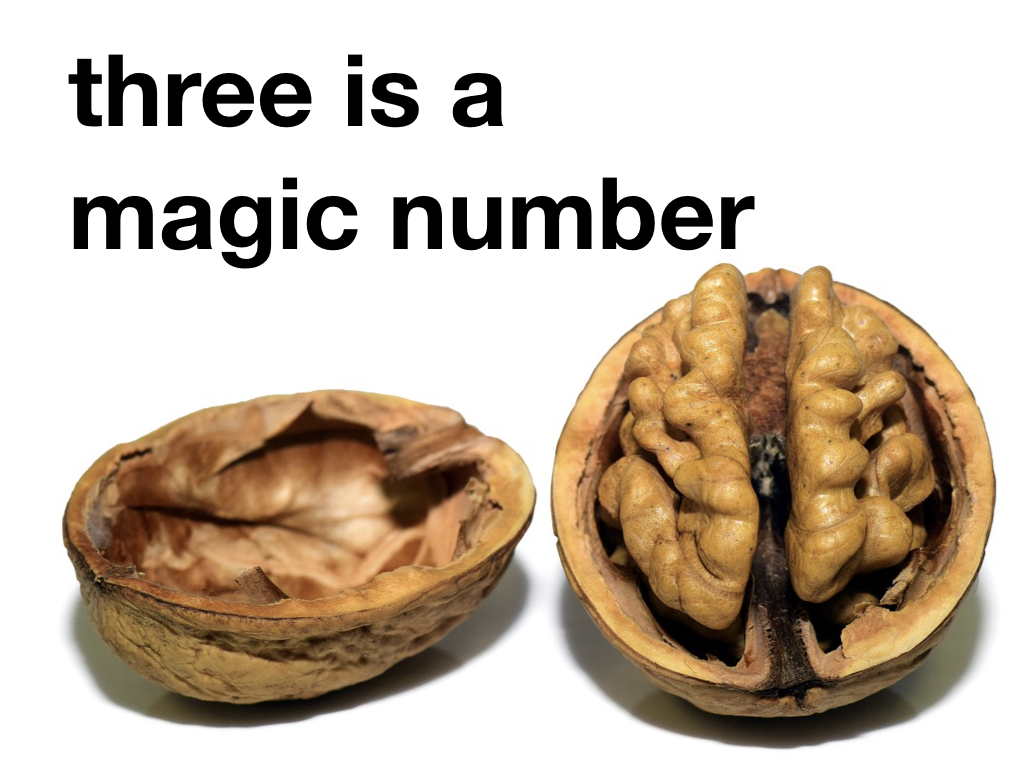Every talk should have a message. This should be clear and explicit. Your audience needs to know precisely what you have just told them with no confusion as to your intentions. Remember the case of Columbia and the consequences of ambiguity.
Your message should be one sentence, one breath. This is what I am going to talk to you about. It should be made clear right at the beginning of your talk. People actually love spoilers. Your message is not a punchline for the end. It should be there at the beginning.
Summary slides by definition are therefore poor. They essentially say “having spoken to you for X amount of time actually these are the key points you should have listened to and taken away.” Don’t use summary slides. Instead, imagine what your summary slide would be if that helps. Then don’t use it.
It is impossible to cover everything in a talk. Nor should you try. No subject can be completely covered in a presentation and if you try to do so you’ll fail. Your presentation should be like an iceberg. You can only show so much. Present your message and inspire your audience to find out more.
People do not learn by just attending one session on one subject and that is it. We learn by spaced repetition or spaced practice. Like the name suggests this practice involves the regular repetition of principles and messages over a period of time. This period of time can be over weeks and should be considered when designing a curriculum. Or it could be your one key message repeated several times during your presentation.
I was lucky enough to see Professor Brian Cox, one of my role models as a teacher, live on tour. Was he covering everything? Did we leave knowing everything he knew? Did we know everything there is to know about space and time and quantum mechanics? No. He knew his audience and he tailored his message for us.
Brevity is beautiful. Brevity is also hard. It goes against our instincts as we want to show everything we know and all about the work we’ve done. The less time you hard the harder it is. The hardest talk I’ve ever had to give was a three minute talk on a project. The project involved me designing a smartphone application for use in simulation sessions and to support my students during their week in the department. This work had taken over eight months and I was supposed to boil this down to three minutes? It seemed impossible.
This is why you need to go away and write out everything. Write a blog or a report or make a handout. Record a podcast. Something where everything is. In that act you’ll spot the key bits to take out and put into your presentation. The rest your audience can find out afterwards from your blog or your report or your podcast. This bit has to be done.
Three really is as magic number. It is the largest number of objects we can immediately recognise without having to count. It also forms a nice pattern in our mind. Look at successful public speakers or slogans and see how they use the rule of threes: “I came, I saw, I conquered”, “Education, Education, Education”, “See it, Say it, Sorted”...the list goes on and on and on. Three key points in the talk will be memorable to your audience and help form the basis of your story.
So, back to my three minute talk. Having written out the blog containing all the information I identified the three key parts of the process and with that my message. My message was how a custom made application could maximise the short time students had with me. This was right at the beginning. I then highlighted the three key points at the beginning and went through those. I signposted to the blog for them to find out more.




